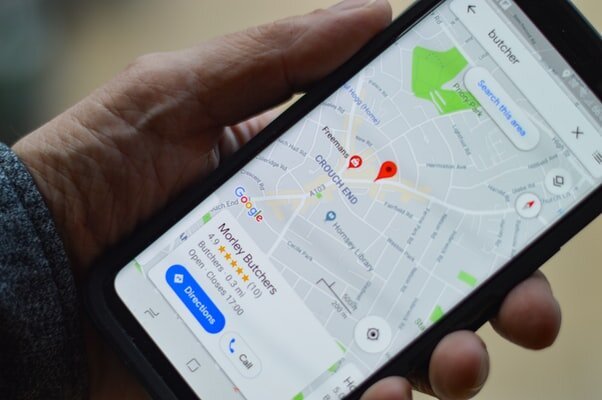What is a Brand?
Is a brand just the visual identity of your company – your logo, colors, font, corporate image, etc.? We certainly get a lot of requests for just that… “we need a new website, we need a logo refresh, new photography, or a cool branding video.”
These are all important expressions of a brand to be sure, but they don’t get to the essence of it. Branding isn’t about adopting a set of strategies that mimic your most successful competitors. And it’s certainly not just a logo or a product or service.
Your brand is everything you do. It’s the sum total of accumulated meaning behind every person’s gut feeling about your product, service or organization.
Your brand is your story and promise to your customer. But! It’s not necessarily the story or promise you want to tell. It’s the one your customers remember. It doesn’t matter what you think your brand promises or communicates. It’s the way customers perceive your brand that defines it. If you don’t have a strong sense of who you are as a company – and you’re not able to clearly communicate that value to a market that finds it relevant – even the most advanced marketing tools won’t keep your business from falling short of its potential.
Successful branding is the art of aligning what you want people to think about your company with what people actually think about your company. It’s about starting a dialogue that becomes an invitation to a relationship.
So how does this work for professional services firms?
If we had a dollar for every firm we encountered that attempted to build their brand through statements like these…
“We are committed to meeting client needs.”
“We have deep industry expertise.”
“We have a culture of transparency and trust.”
…Let’s just say , we’d have already retired in Hawaii.
These types of statements might be true, but they are also completely forgettable. To go from one of many to one-in-a-million requires the continual process of knowing your marketplace, consistently anticipating what will be relevant to your customers, and identifying that which credibly differentiates your business from the competition. All to ensure the sustainability of your organization.
Let’s talk about these four words, and why they are so significant for the development and stewardship of a healthy brand.
Sustainability
What is it?
A brand with longevity. A brand that can evolve, expand and shift with the times, all without sacrificing market share or customer loyalty.
How to get it?
First, tie your mission to purpose, not profit. Ensure that your promises are crystal clear in terms of what is celebrated and what is valued. Understand the importance of creating an emotional connection with your audience. Solidifying this emotional experience through effective marketing ensures that customers will return often and for the long term.
Why does it matter?
Today’s consumers are savvy. They see through marketing fluff. Customers appreciate quality and they will notice if you take care in crafting the best possible interaction with your brand. This constant return to your service because of that consistency is what breeds brand longevity. It is the pathway to sustaining business growth over time.
Top tip for professional services firms:
Produce more and better content than your competitors. However, the best content in the world that doesn’t build an emotional connection is worthless. Unfortunately, we see a lot of self-indulgent content that doesn’t move the needle of building brand equity and revenue
Relevance
What is it?
This is the hardest brand attribute to retain. Markets constantly shift. New trends emerge. Competitors enter and shake things up. Relevance is the core of differentiation. When a brand is relevant, when it emotionally connects, it powerfully influences customer loyalty.
How to get it?
Focus on a greater customer understanding. Everything your brand invests in, creates and brings to market must be designed to meet important needs in the lives of your customers. Maintaining relevance requires brand pragmatism. The freedom to take bold steps, make smart bets, fail quickly and experiment often.
Why does it matter?
Your customers are experts at ignoring the tens of thousands of brands that don’t interest them. Smart brands understand the rules of relevance, and earn and re-earn their position in the marketplace each and every day.
Top tip for professional services firms:
Push the status quo. Even as an industry leader, engage with your customer in new and creative ways, and find new ways to address unmet needs. Too often, established professional services firms remain stagnant and antiquated in their client communication strategies. You need to continuously find new ways to connect, engage and inspire your customers.
Credibility
What is it?
Brand credibility is your reputation, which is built on perceived trustworthiness and expertise. It is the believability of your brand, it is your brand’s perceived ability and willingness to continuously deliver what has been promised.
How to get it?
A brands credibility correlates highest with brands with higher marketing mix, consistency over time, and higher brand investments. Put another way, customers want to see you actively invested in the promotion of your brand in a consistent way over a long period of time.
Why does it matter?
Your brand authority is a reflection of the cumulative impacts of associated past and present marketing strategies and activities. It is the single largest influencer of your customers buying state of mind, especially if your industry has higher perceived uncertainty when choosing a service.
Top tip for professional services firms:
Reputation will always best capture the essence of your brand. Cultivate endorsements, reviews, testimonials. Be intentional about demonstrating your credibility through visible channels.
Consistency
What is it?
It is the degree of harmony and convergence among the marketing mix elements and the stability of strategies measured over time. It is a brand's attempt to communicate a message in a way that doesn’t distract or wander away from the core brand strategy, values and foundation.
How to get it?
Develop standards for brand consistency, on and offline. Every interaction customers have with your brand should dependably and understandably embody your promises and values. Create a distinct visual brand identity. Words and visuals are the two pillars and you need consistency in both.
Why does it matter?
In order for customers to trust you, they have to feel like they know you. In order for them to feel like they know you, they must be aware of you, recognize you, and remember you. In order for people to recognize and remember you, you must show up in a way that’s consistent.
Top tip for professional services firms:
Awareness is a process. You need to utilize multiple channels consistently over time in order to prove your value, credibility and relevance. Don’t assume the website you developed five years ago or the same ad you’ve been posting in the Yellow Pages is going to cut it.
We can Help
If you’ve spent any time on our site, you’ve probably seen these words elsewhere. That’s because they are at the core of everything we do. As a firm that specializes in both developing and stewarding your brand, our job is to create structure and vision by improving these four important brand health indicators.
If you’re a professional services firm that:
Needs to reposition in order to compete with a new set of competitors.
Merged two firms with different brands.
Has a major change in strategy or direction.
Is seeing the emergence of a new competitive advantage.
Is launching a significant new service line.
Then we may be a good match. Contact us today to see how we can help improve your brand’s health.




